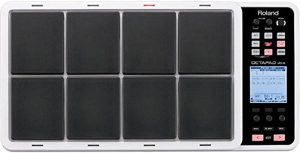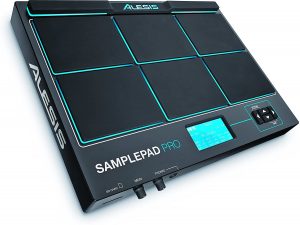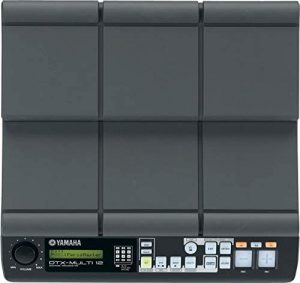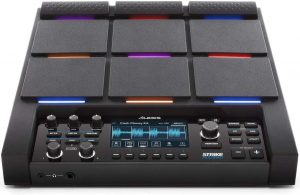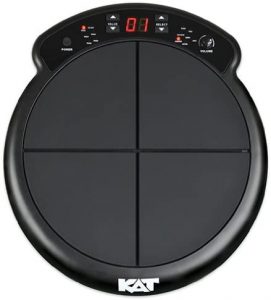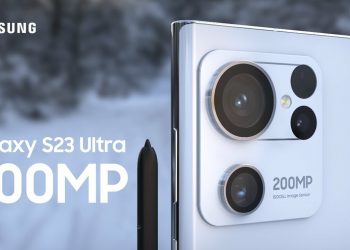Updated on April 3rd, 2022
The innovation of electronic drum pads was revolutionary to the drumming industry. These drum pads are now commonplace in drummers’ setups. A drum sampling pad can offer an artist a wide range of sounds that cannot be normally achieved on a standard acoustic drum set. The moment you strike the rubber pads it can trigger pre-recorded audio samples, synthesized drum sounds, and backing tracks.
The vast array of sounds made them extremely popular and indispensable during a live performance. Most of the popular and large onstage performances will have some of the best electronic drum pads fitted amongst the drummer’s toms or right by the hi-hat.
In general, drum pads are popular with drummers and percussionists, but they are used by producers and DJs in their studios as well. This is because they can function as great MIDI controllers. Some pads can also be configured into a mini-drum kit by adding auxiliary kick and hi-hat pedals.
Here are some of the best electronic drum pads that can be a great addition to your drummer’s kit.
Best Electronic Drum Pads – Reviews and Comparisons
Overview of Features
The Octapad SPD-30 is a percussion pad built for drummers and percussionists who want to go digital or add electronic sounds to their drummer set-up. The electronic pad sports eight pads that give decent target areas for live performance Eight pads means that you can access full kits of hi-hat/snare/kick and toms all at once.
The Octapad SPD-30 features 670 built-in sounds ranging from drum kits to various FX and samples. Besides, the phrase looping is great on the Octapad. You can loop 3 separate instruments with options to delete, mute, pause, etc. Although you are limited to 3 instruments, you have the option to switch them while you are performing.
What We Like About Roland Octapad SPD-30
The pads are equipped with patented V-Drum sensitivity contributing to unmatched isolation and an excellent feel.
What We Don’t Like About Roland Octapad SPD-30
You cannot load your own samples on this device.
| Pros | Cons |
|---|---|
| Vast sound library Portable |
Cannot store outside samples |
Overview of Features
This digital drum pad highlights eight fully responsive rubber drum pads lit with blue LEDs. It allows for wide extensibility with external pads. Therefore, the Alesis SamplePad Pro can function as your own mini electronic drum kit. You can load your custom samples on it making it a great choice for learners.
The user interface is simple to navigate while the pads are thick and responsive. This digital drum pad supports sample playback in the standard SD card as well. Alesis Samplepad Pro is a perfect addition to a home studio or just a beginner on a budget.
What We Like About Alesis SamplePad Pro
Fitted with 8 rubber pads, the device is comfortable to play with.
What We Don’t Like About Alesis SamplePad Pro
You will experience crosstalk issues during a performance.
| Pros | Cons |
|---|---|
| Good value for money Perfect for beginners |
Crosstalk issues Switching time between kits could be reduced |
3. Roland SPD-SX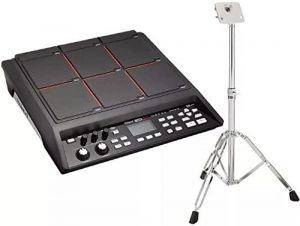 Overview of Features
Overview of Features
The Roland SPD-SX is the industry standard for triggering loops, samples, and backing tracks. Its high build quality, intuitive design, and excellent functionality brought it to the frontline of competition. Complete with 100 onboard drum kits and a vast array of effects, the device sounds great out of the box.
The main advantage is the multi-pad sampling ability. With an external audio source plugged in, you can record samples directly onto each individual pad. By starting or stopping the sample-recorder with one click you can splice them up in real-time.
What We Like About Roland SPD-SX
This device has 4GB internal memory, allowing for 720 minutes of samples. You can also expand the memory using USB storage.
What We Don’t Like About Roland SPD-SX
Unlike the Octapad, you cannot create phrase loops while you are playing the SPD-SX.
| Pros | Cons |
|---|---|
| Easy to use Decent onboard storage space |
Only two external pad inputs |
Overview of Features
The Yamaha DTX Multi 12 is a sampling pad that can be closely compared to the Roland SPD-SX. You can add up to 5 pads and it sports a huge array of sounds to choose from including world percussion, various keyboards, and FX. Not to mention the huge sample of drum kits at your fingertips with the added advantage of loading custom samples. This can function as an excellent sample pad and percussion pad.
Moreover, the pads featured on the digital drum kit are ultra-sensitive that are laid out in a stepped format. These pads support finger and hand drumming and are fully mutable.
What We Like About Yamaha DTX Multi Pad
The collection of control buttons is soft to the touch and responsive.
What We Don’t Like About Yamaha DTX Multi Pad
The DTX-Multi has only 64MB of internal memory for loading custom samples.
| Pros | Cons |
|---|---|
| Soft rubber pads Decent connectivity options |
Low memory capacity |
Overview of Features
If you are a professional looking for a versatile digital drum pad, then the Strike MultiPad from Alesis is the right option. It offers 32GB of storage space and over 8000 sounds with sampling and looping capabilities. The sampling function is excellent and it is easy to edit audio directly on the console. The looping function allows for phrases of up to 16 bars.
The device is complete with a 4.3-inch color screen with RGB lighting and a headphone jack in the front for easier access. The RGB lights are fully customizable and serve as visual indicators that can be used to reflect tempo, drum or loop assignments, sample duration, etc.
What We Like About Alesis Strike MultiPad
It accompanies a wide variety of in-built samples and also has the easy option to import your own samples.
What We Don’t Like About Alesis Strike MultiPad
Long loading time while switching between functions is a hassle.
| Pros | Cons |
|---|---|
| Velocity-sensitive RGB pads 32GB internal storage |
Loading troubles |
6. Nord Drum 3P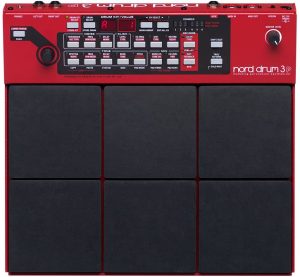
Overview of Features
The Nord Drum 3P is a percussion synthesizer and not a sampler. Therefore, all the sounds produced by the unit are made using synthesis. The machine is equipped with four modes of synthesis: resonant synthesis, subtractive wave types, FM synthesis, and ring modulation synthesis.
It features 200 sounds along with a massive assortment of modulators, oscillators, reverbs, filters, and on-board FX. You can customize these to tailor your music and save them on one of the 400 banks present on the synthesizer.
What We Like About Nord Drum 3P
The six rubber pads are smooth and responsive.
What We Don’t Like About Nord Drum 3P
The Nord Drum 3P only has six pad channels, so you have limited places to hit.
| Pros | Cons |
|---|---|
| Excellent build quality Portable |
Expensive |
7. KAT Percussion Electronic Drum Pad
Overview of Features
KAT electronic drum pad is a great choice for beginners as it is budget-friendly and user-friendly. The drum pad is compact and it is the perfect pad for traveling. Besides, it is also easy to set up. These characteristics make it a suitable choice for entry-level drummers.
This electronic drum pad has 50 drums and percussion sounds. In addition, it has four velocity-sensitive pads. You can tailor the sounds on the four pads. It allows you to adjust the volume of each pad according to your preferences. You can also adjust the reverb and sensitivity. This electronic drum pad comes with two additional inputs. You can use them for a hi-hat controller pedal and bass drum trigger. It also accompanies USB/MIDI connectivity.
What We Like About KAT Percussion Electronic Drum Pad
It is compact and user-friendly.
What We Don’t Like About KAT Percussion Electronic Drum Pad
The pads are very small and close to each other.
| Pros | Cons |
|---|---|
| Affordable Easy setup |
Pads are cramped together |
Final Verdict
We recommend using the Roland SPD-SX as it is the industry standard for triggering loops, samples, and backing tracks. It has 100 on-board drum kits and a vast array of effects that are great for a professional musician. The high build quality, intuitive design, and excellent functionality make it a great product for passionate drummers who are still learning the art. The device sounds great out of the box and therefore is great for a studio gig.
Electronic drum kits give you more possibilities for different sounds to be created compared to your acoustic drum set. This is why music producers and other artists prefer using a digital drum pad along with their drummer rig. These sonic possibilities are extremely useful for live gigs.
Buyer’s Guide
- Electronic drum pad head
A good electronic drum pad features ahead that will have a resonance of the sound you want. Resonance is an important characteristic when it comes to drumming. Some sample pads regulate the function by the hit force you apply on the surface. Some also allow the use of bare hands, drum sticks, and stomping by the foot.
- Type of electronic drum pads
There are 3 types of electronic drum pads - sample pads, which allow you to load your own sounds, percussion pads that have only internal sounds, and all-in-one electronic drum pads which are for casual gigs.
- Number of pads
More number of pads means that you can create more variety of sounds. Plus, this makes way for a more hitting area while you are performing making it more user-friendly.
- Storage
One of the main reasons to use digital drum pads is that they can record and play custom sounds. Choose a drum pad that can accept SD card transfers and imports. This provides a way to transfer other sounds to add to your samples and effects.
- Portability
For those traveling artists portability of their musical instruments is a must as carrying clunky machinery during a tour is not an option. Therefore, make sure that your drum pad equipment is lightweight and compact enough to be carried around with you.
FAQs
1. How do I load my own samples?
First, check whether your drum pad has the capability of loading custom samples. Some require specific formats and bitrates (e.g. 16-bit WAV files). Loading is generally done via a USB drive or SD card.
2. How do I record my electronic drum pad?
If you want to record your electronic drum pad to your computer, then you will need an audio interface. To connect to your computer, connect the outputs from your pad to the inputs on the interface using instrument cables. Then connect the interface to your computer via USB.
You can also connect most electronic drum pads to computers and other music gear via MIDI. This way you can trigger drum sounds from music production software instead of using the onboard sounds stored on your drum pad.
3. Do you need an amplifier for using a digital drum set?
This depends on the sound you want from the equipment. If you feel like the pad cannot produce enough sound you can connect the audio outputs to an amplifier or PA system via instrument cables.
4. Should you need a computer with DAW software to use digital drum sets?
DAW software is used by professional music producers who need the added effects coupled with ease of producing music on their computers. Automated patch changes, more customization of effects like pitch, reverb, delay, and compression, backing track control and sampling, etc. are some of the benefits of using DAW software.
If you are a professional, DAW software will be useful for you as you can explore more sound effects expanding the musical palette. If you are a beginner, then DAW software isn't necessary as the drum pads come with inbuilt effects which are enough for practice sessions.
We hope our review on the best electronic drum pads was helpful for you.
More to read:
Best Drum Tuner for Fast, Easy Tuning At Practice Sessions 2021.
We hope you love our reviews! For your information, we do earn money from commission in the link in the content! For more information click here!


